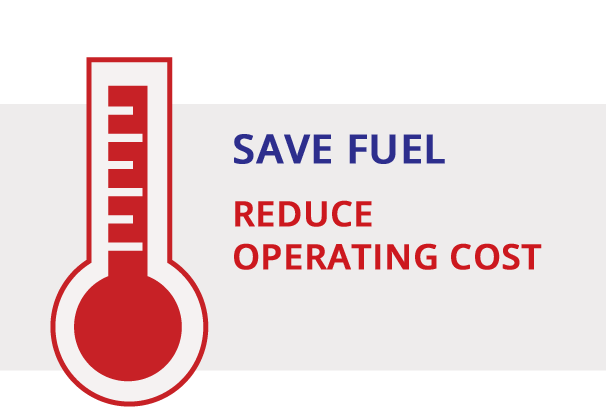Summer Overheating
Environmental Issues at the Visitor Centre
One of the objectives of our project was to maintain the desirable Indoor Environmental Quality (IEQ) within Visitor Centre. This encompassed acceptable air quality and temperature levels.
In order to ensure indoor air quality, in terms of contaminant concentration, we initially followed the CIBSE Guidance for Ventilation in Buildings according to the usage and the occupancy profile of each zone. These acceptable air quality levels regarding CO2 concentration were confirmed for the occupied building zones using the ESP-r software.
The main issue that has been identified through the monitoring of internal environmental conditions is the overheating experienced during summer months. The temperature within the Visitor Centre was felt to be satisfactory in the winter months, but overheating due to solar gain was identified as a major problem for employees during summer, with glare also being cited as an issue. This has been identified in both the monitoring results for a building performance evaluation report and in the occupant feedback. Additionally, these very high reported internal temperatures coincided with the ones we found in our building simulations using the ESP-r tool.
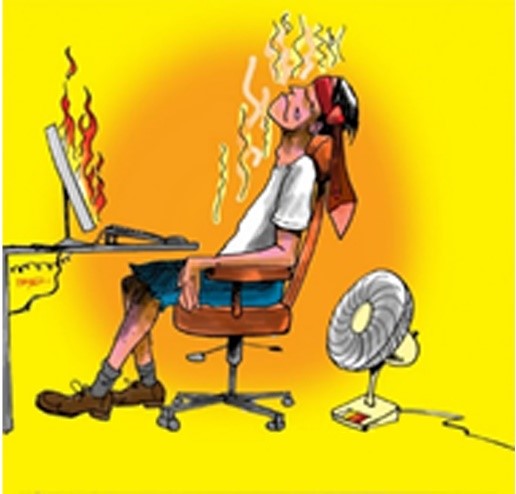
Measures to Combat Summer Overheating
1. Increase Ventilation
The first method we approached in order to tackle the summer overheating problem involved increasing the ventilation rates. This could represent either a more intensive operation of the MVHR unit or window and door opening schemes. This method caused indoor temperatures to fall. However, applying exclusively this solution was found to be ineffective, since internal temperatures were still at unacceptably high levels, up to 30.8°C.
2. Implement Shading
Our second approach to combat the increased levels of solar gain in summer and the discomfort caused to workers involved implementing shading, namely blinds, in addition to the increased ventilation rates. Below is presented the effect of using blinds in the office area, with regards to the temperature levels and the total number of hours that temperatures exceed three benchmark limits.
Note: In our simulations, blinds were assumed to cover the 90% of the windows area. Any additional requirements for artificial light were also taken into account.
The following graph displays the temperatures in the office during July before and after the shading implementation.
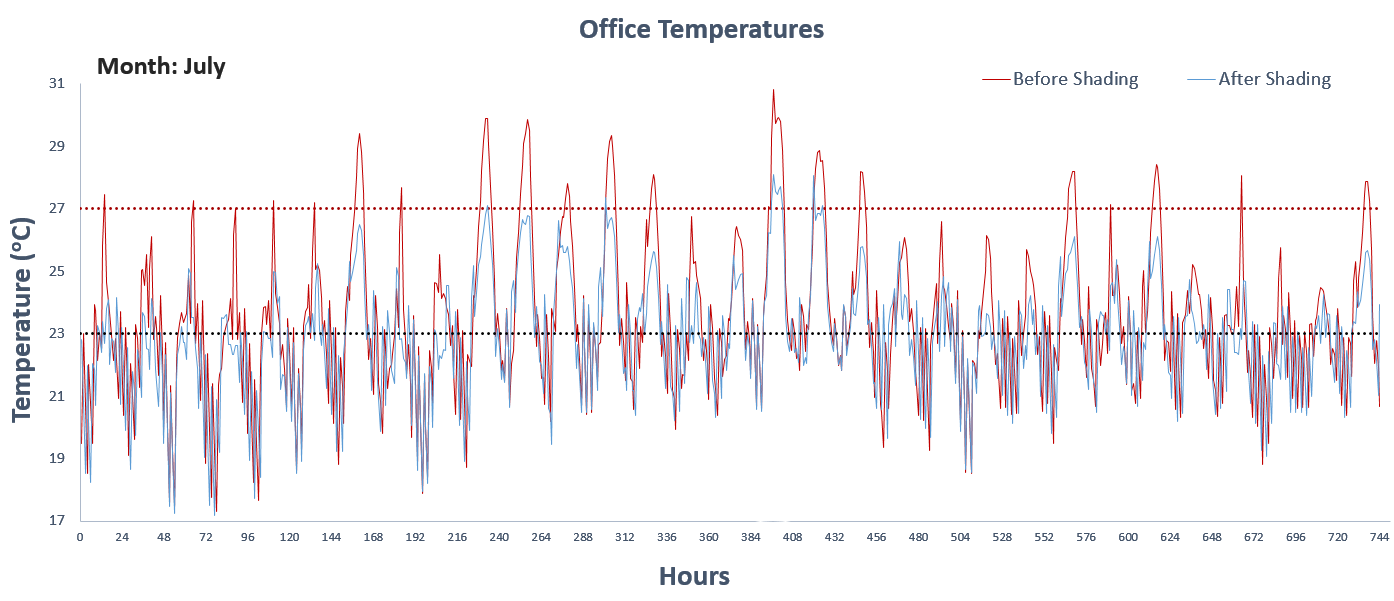
The next graph illustrates in more detail the shading effect in the office, focusing on the hottest working day in July.
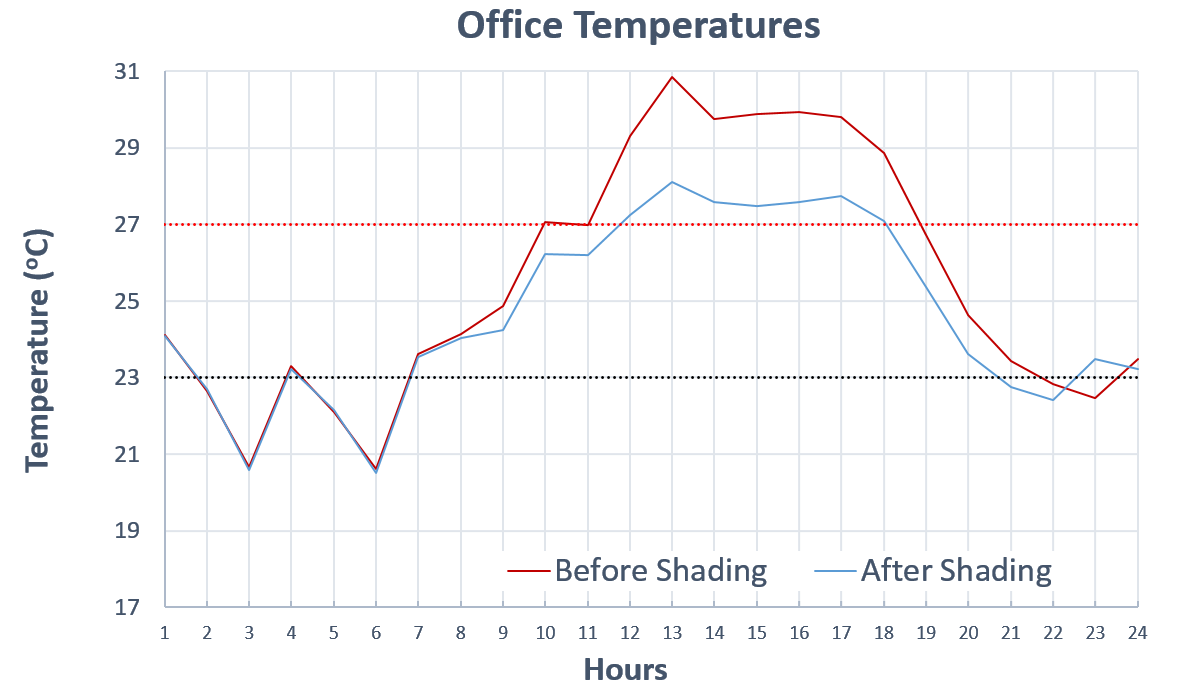
A clear comparison between the number of hours that temperature in the office area exceeds 23°C, 25°C and 27°C during July before and after the addition of blinds is provided in the bar charts below.
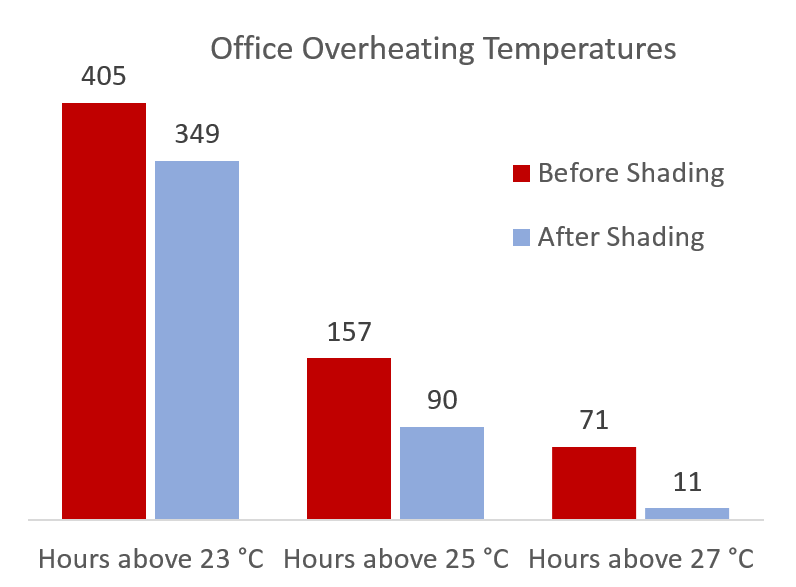
As can be seen, external shading can provide an even more effective solution to summer overheating. On top of that, this prevents much of the glare that was also reported to be a problem during the summer months, for example when using a laptop.
Although the above results describe the shading effect only during July (when indoor temperatures were the hottest), similar improvements in temperature levels are expected for the rest of summer months.
It should be noted that shading was suggested to be used only during summer, when the overheating problem arises. Using shading in winter is not suggested, since that would greatly increase the users’ demands for artificial light and reduce solar gains, hence the total energy requirements would ultimately increase. Lighting demands are currently largely met by the natural light entering the building, as the design of the building, featuring large windows, ensures maximum daylight harvesting. In addition, the solar gain through these windows reduces the required extra heating load during the day.
3. Implement Cooling System
The greatest and most direct reduction in the high summer temperatures could be achieved by using a cooling system. Users would easily adjust the cooling set points according to the desirable temperature levels and avoid any thermal discomfort caused during summer. However, this option was rejected, since it is a very energy-intensive solution and would further increase the building’s energy demands. Besides, an undue rise in electrical needs would be against our “demand reduction” objective towards the Net Zero Energy Building aim.
